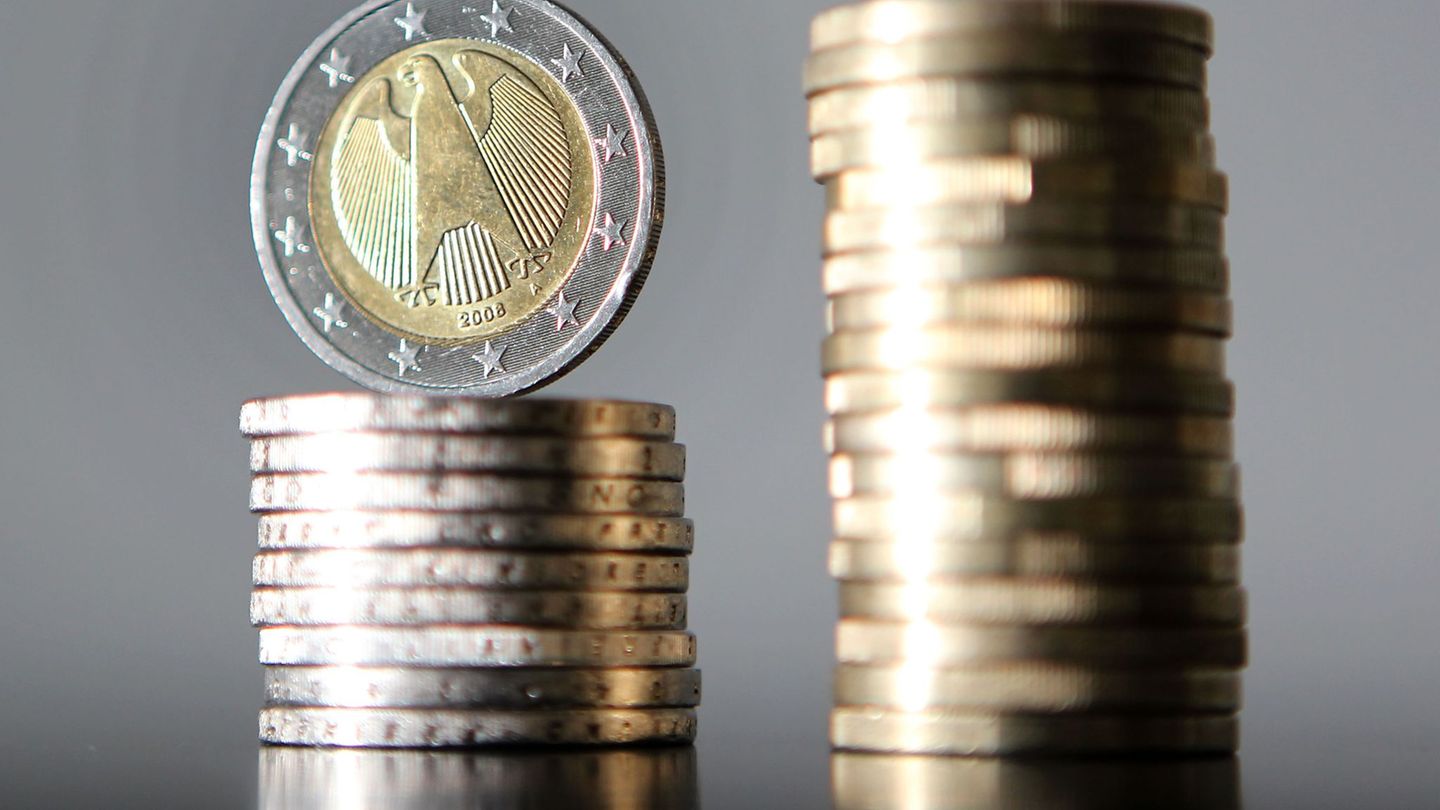Did oil break supports?
. – Correct, this would lead to a drop in agricultural raw materials, at the same time that Sergio Massa puts the soybean dollar 2 into operation. Raw materials drop so much that wheat prices in Argentina are higher than abroad, and the same could happen with corn. Soybeans should show a significant drop.
What happens with the Country Risk?
. – It should rise, which brings with it a drop in Argentine stocks and bonds.
How does it affect the dollar?
. – Clearly we will see a devaluation of the peso, the Chinese crisis will impact all of Latin America, especially China’s main trading partner in the region, which is Brazil. The real is at 5.41 per dollar, with this crisis it could overcome the barrier of 6.0 reais per dollar, if this happens the bullish rally of the alternative dollars in Argentina would be very important.
How are the monetary reserves and liabilities?
. – The reserves U$S 37,604 million and the total monetary liabilities in $13.5 million, this gives us a balance dollar of $358. We should note that by December 30 we should add some $500,000 to the monetary liabilities million in interest on the debt, plus what we are going to issue for the soybean dollar two, if US$ 3,000 million were liquidated, the dollar could end up at $400 at the end of December.
Benefits of the soybean dollar?
. – The benefits are that the national State will see more dollars entering the reserves, but on the other hand it will see an increase in monetary liabilities, for which reason the effect on the balance of the Central Bank is neutral. On the other hand, it will increase tax collection with a withholding of 33% and will be able to close the fiscal numbers with the IMF.
Damages?
. – The Central Bank will borrow to achieve this objective, therefore, it will be left with a debt that would end up paying an annual rate of 107.0%. This leads to a greater gap between the official dollar and the alternative dollars in the future. It would also impact on an increase in prices in the economy, ergo more inflation.
How do you see agricultural raw materials?
. – I think that the soybean dollar is very harmful, the government does not want to lower withholdings for producers, but it lowers withholdings for exporters, taking two points off the differential. The government understands the problems of exports, but not that of the producers. On the other hand, the soybean dollar is a transfer of resources from the producers to the owners of the fields, who charge rents with preferential dollars, while the producer has to sell throughout the year to finance their income, but mostly liquidates at harvest which is when the government does not offer improvements in the exchange rate. On the other hand, this soybean dollar harms the rest of the agricultural productions, increasing costs for those who use soybeans, something that the government is unaware of, and is unaware that there are communicating vessels in the economy.
you didn’t answer my question
. – Agricultural raw materials are down, wheat in Argentina is worth more than in Chicago and something similar is happening in corn (see Private Report). In the case of soybeans, it falls due to the Chinese effect and the large supply that the soybean dollar will generate in Argentina.
What happens to livestock?
. – We are going to a great crisis in the beef and chicken sector. The corn that is consumed in Argentina is not all paid for. In the 2021/22 harvest we have 51.1 million tons, 41.7 million tons were sold, of that total only 35.5 million are priced, the rest, which is 6.2 million tons, is priceless. And we don’t know if those who consumed it will be able to pay for it, since many enterprises that took corn are with very tight margins. The feedlot with this price of corn is working at a loss, the same as the chicken. For now, and only for now, the pig is in good standing. However, with the rise in the soybean dollar I think it will be very fair, the cost of the pig is 2 kilos of soybeans and 5 of corn, if we do the math it gives us $360 and the pig sells for $290, except for large farms , the small and medium will be at a loss with this rise in soybeans.
The dairy?
. – It is very complicated, we are going to the dry cow months with falling production and rising costs, this is lethal for the dairy. The dairy farm’s revenues are in pesos and the costs are in dollars, which the government raises for its own purposes and to the detriment of sectoral productions, crazy.
Did the exchange report arrive?
. – Correct, in the last 12 months the trade balance did not show a positive balance of US$ 5,200 million, while the difference between what was collected and paid for exports and imports was US$ 19,243 million.
How is it explained?
. – Although both values are not comparable because one takes into account the freight value and the other does not, we believe that the difference could be around US$ 10,000 million, which are imports that are liquidated in 180 days. This must be paid in the coming months, and the Central Bank does not have enough dollars.
Consequence?
. – We will continue with semi-closed imports until this amount is settled, or else we have income from future dollars to be able to show a better balance. In principle, I don’t think many dollars will come in in the future due to the drought effect. Therefore, I see economic activity as very complicated, without imports being fluid.
Would this affect trade and industry?
. – Correct, I think that this would reduce economic activity and, due to the scarcity effect, prices would rise, with which we have a guaranteed recession and inflation for the coming months.
What happened to the money spent on trips abroad?
. – In the month of October, Argentines spent US$483 million on trips abroad and foreigners US$45 million in Argentina. Argentines spent in October below the average, which is US$ 510 million, and foreigners spent above the average, which was US$ 34.4 million per month.
Are the measures working?
. – I think so, the implementation of the tourist dollar or Qatar makes travel abroad much more expensive, and more local destinations are chosen, which in some cases are more expensive than abroad. You begin to notice the benefit of foreign tourists, but they do not move the ammeter.
Are foreign investments arriving?
. – Not at all, in October U$S 40 million arrived and in 12 months U$S 575 million, what we would say, nothing itself.
What result does the balance of dollars give us?
. – The balance of dollars gives us a negative balance of US$ 914 million in the last 12 months, but be careful, we owe close to US$ 10,000 million to importers. I would say that we have a deficit in the balance of dollars of at least 2.0% of GDP, if we take into account that in the balance of pesos (result of the Treasury) we have a deficit of 4.3% of GDP, this gives us It shows that Argentina is about to lose reserves and issue pesos in an uncontrolled manner in the coming months.
How are the rates in pesos?
. – The bonds in pesos that adjust for inflation show rising rates, the bond that matures in August 2023 yields inflation plus 7.1% per year and the bond that matures in July 2024 yields 12.9% per year. a 5.8% gap between the two. In the case of the bond maturing in October 2023 at a variable rate, the rate is 128.2% per year.
What do these returns mean?
. – The market does not finance the Treasury beyond the year 2023, and when it does, it asks for higher rates. This dynamic is dangerous because it increases the concentration of maturities and increases interest payments. In this dynamic, the fiscal deficit increases, issuance is accelerated, this brings as a consequence more inflation and more exchange rate gap.
conclusions
. – The soybean dollar is a Hood Robin, it is removed from production to benefit exports and landowners who are rentiers.
. – The rise in the price of soybeans should place it around $100,000, but don’t get your hopes up, the program will end at values below $80,000. There are people who will take care of lowering prices.
. – The rise in soybeans takes away profitability from livestock and dairy, beware that in many cases there could be difficulties in honoring compliance.
. – The international context does not help, China’s Covid policy and street demonstrations predict a sustained decline in the markets, be careful in Argentina, wheat is worth more than in the world, and in corn we are close to that happening.
. – We will have a rise in Country Risk, alert with the price of the real and its impact on local alternative dollars.
. – Argentina has a strong deficit in the balance of dollars and pesos, this is the source of high inflation and imbalances in the dollar.
Source: Ambito
David William is a talented author who has made a name for himself in the world of writing. He is a professional author who writes on a wide range of topics, from general interest to opinion news. David is currently working as a writer at 24 hours worlds where he brings his unique perspective and in-depth research to his articles, making them both informative and engaging.




